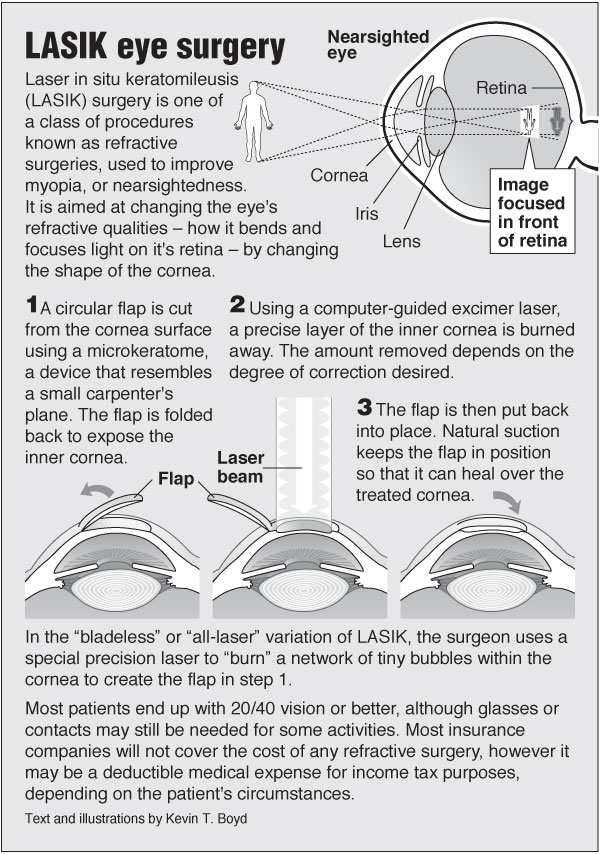Just How Does SMILE Eye Surgical Treatment Contrast To LASIK And PRK?
Just How Does SMILE Eye Surgical Treatment Contrast To LASIK And PRK?
Blog Article
Web Content Author-Adler Wilder
If you've been considering SMILE eye surgical treatment, you might question just how it compares to LASIK and PRK. Each treatment has its own collection of benefits and factors to consider. From quicker recovery times to prospective dangers, there are vital distinctions you need to understand before making a decision. Understanding these distinctions will certainly aid you make an educated selection that straightens with your certain needs and expectations. Interested to recognize even more regarding how these procedures compare carefully? Continue checking out to gain an extensive understanding of SMILE, LASIK, and PRK.
SMILE Eye Surgical Procedure Review
If you're considering SMILE eye surgical treatment, you'll discover it to be a minimally invasive procedure with a fast recovery time. Throughout fast track cataract surgery (Small Cut Lenticule Removal), a laser is made use of to produce a little, specific laceration in the cornea to eliminate a little piece of tissue, improving it to fix your vision. This varies from LASIK, where a flap is developed, and PRK, where the external layer of the cornea is entirely gotten rid of.
One of the essential benefits of SMILE is its minimally invasive nature, bring about a faster recovery procedure and less discomfort post-surgery. The healing time for SMILE is fairly fast, with lots of individuals experiencing improved vision within a day or two. This makes it a preferred selection for those seeking a practical and reliable vision modification treatment. Additionally, SMILE has been revealed to have a reduced threat of completely dry eye disorder contrasted to LASIK, making it a desirable option for people worried about this possible side effect.
Differences In Between SMILE, LASIK, and PRK
When comparing SMILE, LASIK, and PRK eye surgeries, it is necessary to recognize the distinctive methods used in each treatment for vision correction.
SMILE (Small Incision Lenticule Removal) is a minimally invasive treatment that entails creating a tiny laceration to draw out a lenticule from the cornea, reshaping it to remedy vision.
How Much Does It Cost To Get LASIK (Laser-Assisted Sitting Keratomileusis) involves creating a slim flap on the cornea, utilizing a laser to improve the underlying tissue, and afterwards rearranging the flap.
PRK (Photorefractive Keratectomy) removes the external layer of the cornea prior to reshaping the tissue with a laser.
The primary distinction depends on the means the cornea is accessed and dealt with. SMILE is flapless, making it a great choice for individuals with thin corneas or those involved in call sporting activities. Cost Of Laser Eye Correction provides fast visual recuperation as a result of the flap production, yet it might pose a higher risk of flap-related problems. PRK, although having a much longer healing period, stays clear of flap-related problems completely.
Recognizing these variances is vital in picking the most appropriate treatment for your vision improvement demands.
Benefits And Drawbacks Comparison
To evaluate the benefits and downsides of SMILE, LASIK, and PRK eye surgical procedures, it's essential to take into consideration the certain benefits and prospective limitations of each procedure. SMILE surgical procedure provides the advantage of a minimally intrusive procedure, with a smaller laceration and potentially quicker recovery time compared to LASIK and PRK. It also minimizes the danger of completely dry eye post-surgery, a common negative effects of LASIK. However, SMILE might have limitations in dealing with greater levels of nearsightedness or astigmatism contrasted to LASIK.
LASIK surgery provides fast aesthetic recovery and very little discomfort throughout the procedure. It's extremely efficient in dealing with a large range of refractive mistakes, including nearsightedness, hyperopia, and astigmatism. Yet, LASIK lugs a danger of flap issues, which can affect the corneal framework.
PRK eye surgical treatment, while not as preferred as LASIK, stays clear of developing a corneal flap, decreasing the threat of flap-related difficulties. It appropriates for patients with thin corneas or irregular corneal surface areas. Nevertheless, PRK has a longer healing time and may include more discomfort during the healing procedure.
Final thought
So, when it comes to choosing in between SMILE, LASIK, and PRK, think of it like selecting the best set of footwear. SMILE is like a streamlined, comfy pair of tennis shoes - quick and simple.
LASIK is more like fashionable high heels - fancy and quickly, but with some potential dangers.
PRK resembles tough treking boots - dependable and resilient, but needing a bit more time and effort.
Eventually, the most effective selection depends on your specific requirements and choices.
